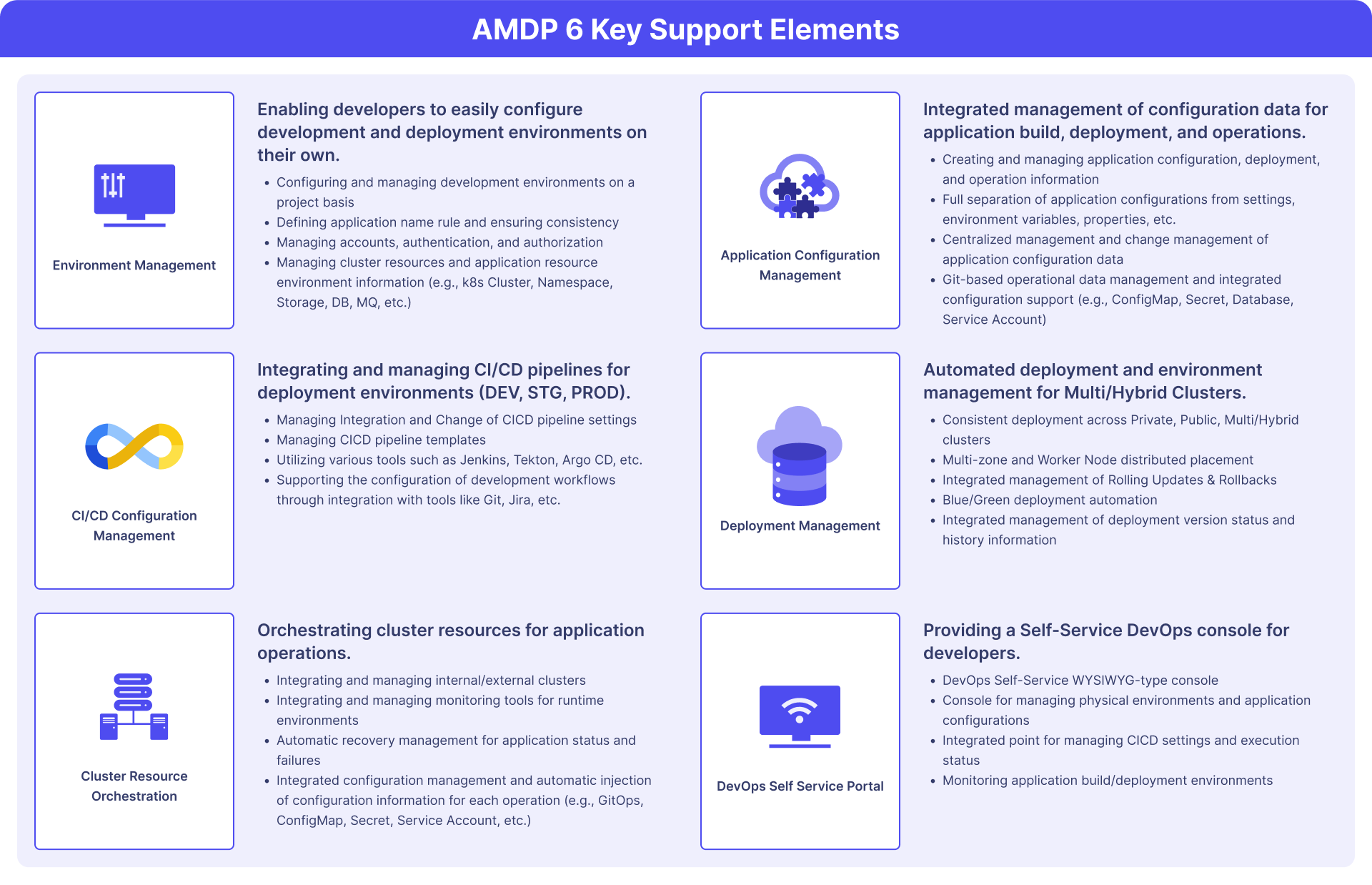Key features
Key Characteristics

AMDP streamlines the automation of DevOps processes optimized for cloud environments within enterprises by enabling the reuse of various components, processes, development environments, CI/CD pipelines, and self-service portals. Its main features include:
- Self-Service Portal: A console designed for developers and architects to configure and run DevOps independently
- Cluster Resource Orchestration: Handles the coordination of internal and external clusters and resources such as databases, monitoring, logging, storage, and configuration files, ensuring efficient application operations.
- Application Configuration Management: Offers unified management of application configurations across the entire lifecycle, from development to deployment, and facilitates automatic configuration updates when the deployment environment changes.
- CI/CD Pipeline Management: Enables the registration and management of pipeline configuration data to ensure continuous building and deployment.
- Enhance Productivity and Code quality: provides comprehensive set of visualized dashboards to monitor, analyze, and optimize application performance and code quality, fostering a more efficient and reliable development lifecycle.
- The Developer SandBox: is cloud-native remote development architecture (RDE) that enables secure, scalable, and standardized environments for developers, which delivers multiple benefits:
- Enhanced Security: All access is controlled via proxy, ensuring no direct exposure of container internals.
- Flexible Resource Allocation: Supports project- or user-specific provisioning of CPU, memory, GPU, and other resources.
- Integrated CI/CD & SCM: Connects directly with Git repositories and pipelines for continuous delivery support.
- Centralized Monitoring: Real-time visibility of container health, resource usage, and user activity via a unified dashboard.
Common workflow
AMDP is a Kubernetes-based DevOps automation tool designed to streamline the development of Cloud Native applications. Here's an overview of what it does:

- Source Code Compilation & Validation: It compiles and validates different types of source code stored in Git repositories, including frameworks like Spring Boot, Vue.js, React, and Docker.
- Container Image Creation & Registration: X builds and registers container images, preparing them for deployment.
- Kubernetes Resource & Deployment Policy Creation: It automatically generates necessary Kubernetes resources and deployment policies to ensure proper application orchestration.
- Automated Kubernetes Deployment: X handles the deployment process to Kubernetes clusters without manual intervention.
- Kubernetes Deployment Monitoring: The tool continuously monitors the performance of the Kubernetes deployments.